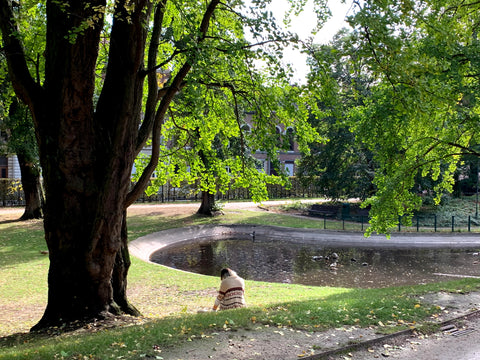Leuven, a city renowned for its academic and cultural vibrancy, is also home to tranquil green spaces that offer a peaceful escape from the urban bustle. From historic parks and abbey grounds to forests and hidden ponds, these scenic retreats provide a glimpse into the city's rich natural and historical heritage. Whether you’re looking for leisurely walks, historical charm, or nature exploration, here are some of Leuven’s most beautiful green spaces.
1. Sint-Donatus Park (Het Stadspark)
Located in the heart of the city, Sint-Donatus Park (also known as Gildenhof or Gillenhof in the Leuven dialect) is a lush urban retreat with deep historical roots. In the 15th century, shooting guilds used this site to practice bow and arrow shooting. Developed into a public park in the 19th century, it retains a charming bourgeois ambience with leafy avenues, benches, and historical ruins.

Why Visit?
-
🏰 Historical remnants of Leuven’s first city wall, including a tower transformed into a small castle.
-
🎭 A bronze bust of Albert Giraud, the symbolist writer whose work inspired Arnold Schönberg’s atonal masterpiece Pierrot Lunaire.
-
🌳 A relaxing green space perfect for a stroll, picnic, or quiet retreat.
2. Park Abbey: A Historic Haven of Peace
Just outside the city centre, Park Abbey is a tranquil nature reserve surrounding a Premonstratensian abbey that took its current form around 1700. This idyllic retreat features four large ponds, scenic walking paths, and a unique blend of history and nature.

Why Visit?
-
🏛️ Explore the abbey's Baroque interiors, including the library’s ornate stucco ceilings by Jan Christian Hansche (1675).
-
🍺 Visit the Braxatorium Parcensis brewery, known for its Libertus 900 (9%) beer.
-
🎶 Experience Silentii, a sound installation that plays fragments of polyphony every five minutes near the ponds.
-
🏡 Pay respects at the abbey cemetery, where notable figures like politician Gaston Geens and cabaret singer Zjef Vanuytsel are buried.
3. Arenberg Park: A Legacy of Science & Nobility
Once the domain of the Dukes of Arenberg, this 16th-century estate has been transformed into a campus for applied sciences, housing KU Leuven’s engineering and architecture faculties. With its majestic castle and rich scientific legacy, the park blends history, innovation, and nature.

Why Visit?
-
🏰 Admire the Renaissance-style Arenberg Castle, home to future engineers and architects.
-
🔬 Learn about Duke Engelbert of Arenberg, a patron of early hot air balloon and steam engine experiments.
-
⛪ Visit the Romanesque St. Lambertus Chapel, restored in 1965.
4. The Ponds of Bellefroid: Leuven’s Hidden Gem
This 20-hectare green oasis, located between Vaart and Sportschuur in Wilsele, is one of Leuven’s lesser-known nature escapes. Once used for matchwood production, it was reclaimed by nature and acquired by the city in 2019.
Why Visit?
-
🦆 Observe diverse wildlife in a protected, serene environment.
-
🚶 Explore walking paths around two shallow ponds that were used for carp farming by the Bellefroid family since the 1940s.
-
🌿 Enjoy the peaceful ambience of a preserved natural area away from the city’s hustle.
5. Heverleebos & Meerdaalwoud: Leuven’s Ancient Forests
Just south of Leuven, Heverleebos and Meerdaalwoud form one of Flanders’ most breathtaking forested landscapes, spanning over 20 square kilometres. These woodlands are remnants of the ancient Coal Forest, mentioned by Julius Caesar in De Bello Gallico.
Why Visit?
-
🚴 Explore miles of scenic walking & cycling routes, perfect for outdoor adventures.
-
🌲 Discover historical landmarks, including:
-
A Roman highway trench.
-
16th-century forest laws are still in place today.
-
-
📖 Step into literary history—author Yves Petry features the Meerdaalwoud in his novels as the mystical “Mirandel.”
Why Explore Leuven’s Green Spaces?
Leuven’s parks, abbeys, and forests offer a unique blend of history, culture, and nature. Whether you’re looking for peaceful walks, architectural wonders, or outdoor adventures, these spots provide an ideal escape from city life.
Source: MIN, Eric, LEUVEN ,( Een gids voor thuisblijvers en passanten), Luster, 2023. Photos by Aslı Tezcan



